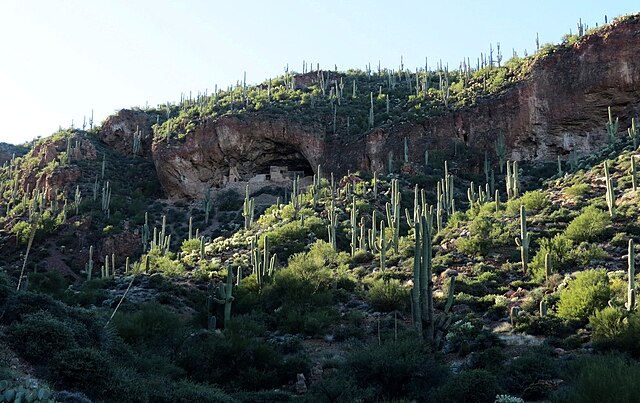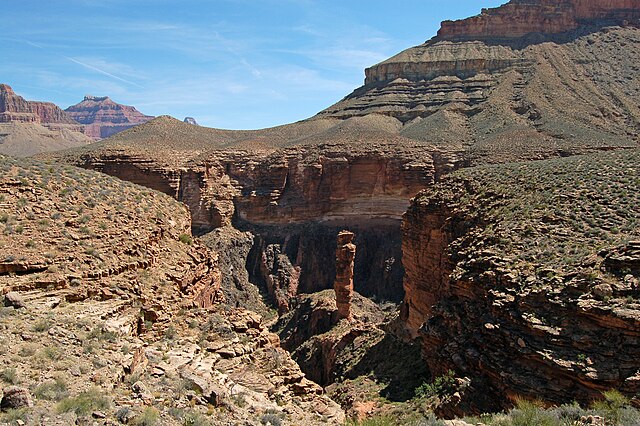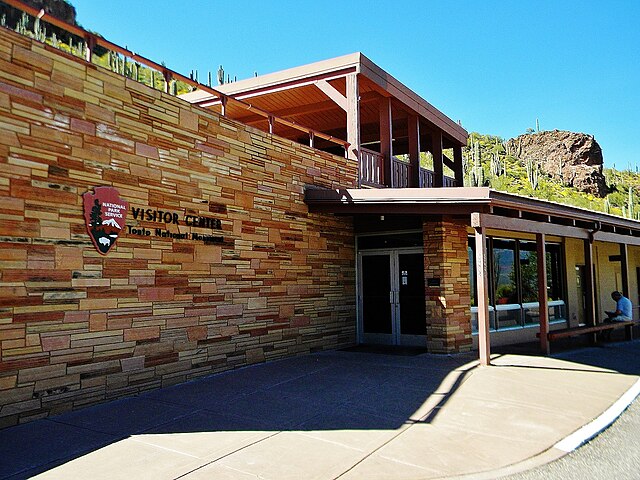Have you ever wondered what it would be like to step back in time and witness how ancient civilizations lived? Nestled in the rugged Sonoran Desert of Arizona, Tonto National Monument offers exactly that opportunity. This remarkable archaeological treasure preserves some of the best-preserved cliff dwellings in the Southwest, providing visitors with an intimate glimpse into the lives of the Salado people who called this desert home over 700 years ago.
What is Tonto National Monument?
Tonto National Monument stands as a testament to human ingenuity and adaptation in one of North America’s most challenging environments. Established in 1907 by President Theodore Roosevelt, this 1,120-acre monument protects several cliff dwellings constructed by the Salado culture between 1300 and 1450 CE.
Think of it as a time capsule carved into the mountainside – these ancient apartments tell stories of survival, community, and the remarkable ability of humans to thrive in harsh conditions. The monument’s name comes from the Spanish word “tonto,” meaning “foolish,” which early Spanish explorers used to describe the rugged terrain. Ironically, the land they deemed foolish proved to be the perfect home for a sophisticated civilization.
Location and Geographic Setting
Located approximately 90 miles east of Phoenix, Tonto National Monument sits along the shores of Roosevelt Lake in the Tonto National Forest. The monument’s elevation ranges from 2,800 to 4,000 feet, creating a unique ecosystem where Sonoran Desert plants meet higher-elevation species.
The dramatic landscape features towering cliff faces, deep canyons, and sweeping vistas that stretch across the Salt River Valley. It’s like nature’s own amphitheater, with the ancient dwellings serving as the main stage where centuries of human drama unfolded.
Historical Significance
Why did the Salado people choose this particular location? The answer lies in the perfect storm of natural resources and strategic advantages. The area provided fresh water from natural springs, fertile soil for agriculture, abundant building materials, and excellent defensive positions. The cliff dwellings weren’t just homes – they were fortresses, granaries, and community centers all rolled into one.
The significance of Tonto National Monument extends beyond its archaeological value. It represents one of the finest examples of prehistoric architecture in the American Southwest, showcasing construction techniques that have withstood the test of time for over 600 years.
The Ancient Salado People: Masters of Desert Living
Who Were the Salado?
The Salado people weren’t a single tribe but rather a cultural group that emerged from the blending of various Native American traditions. They were master farmers, skilled craftspeople, and innovative architects who flourished in the Tonto Basin from approximately 1150 to 1450 CE.
Imagine being dropped in the middle of the Sonoran Desert with nothing but stone tools and your wits – that’s essentially what the Salado people faced. Yet they didn’t just survive; they thrived, creating a complex society that supported hundreds of people across multiple generations.
Daily Life in the Cliff Dwellings
Life in the cliff dwellings was a delicate balance between community cooperation and individual survival. Families lived in multi-room structures built into natural caves and alcoves, with each room serving specific purposes – sleeping quarters, storage areas, and communal spaces.
The Salado people were agricultural innovators, developing sophisticated irrigation systems to channel water from springs and seasonal streams to their crops. They grew corn, beans, squash, and cotton, while also gathering wild plants and hunting game. Their diet was surprisingly diverse, including everything from deer and rabbits to fish from the Salt River.
What’s fascinating is how they organized their living spaces. The cliff dwellings functioned like ancient condominiums, with shared walls, communal areas, and carefully planned layouts that maximized both privacy and security. Each dwelling was a masterpiece of engineering, designed to stay cool in summer and warm in winter.
Exploring the Cliff Dwellings

Lower Cliff Dwelling Trail
The crown jewel of any visit to Tonto National Monument is the Lower Cliff Dwelling Trail, a moderate 1-mile roundtrip hike that takes you directly to the monument’s most accessible ancient structures. This self-guided trail winds through typical Sonoran Desert vegetation before ascending to the cliff dwellings perched 350 feet above Roosevelt Lake.
As you climb the well-maintained trail, you’ll notice how the landscape gradually changes. Desert plants give way to more diverse vegetation, and the views become increasingly spectacular. The trail includes several interpretive stops where you can learn about the plants, wildlife, and geology of the area.
What You’ll See on the Self-Guided Tour
The Lower Cliff Dwelling consists of 16 rooms spread across two levels, representing one of the most complete and well-preserved examples of Salado architecture. As you enter the dwelling, you’ll immediately notice the sophisticated construction techniques – walls built with local stone and mortar, wooden beams supporting upper floors, and carefully designed ventilation systems.
Each room tells a story. Storage rooms still contain remnants of pottery shards and grinding stones. Living areas show evidence of fire hearths and sleeping platforms. The largest room, likely a communal gathering space, features original wooden support beams that have survived for over 600 years.
What strikes most visitors is the ingenuity of the design. The dwelling faces south to maximize winter sun exposure while the natural rock overhang provides shade during the scorching summer months. It’s like having a built-in climate control system designed by nature and perfected by human engineering.
Upper Cliff Dwelling Tours
For a more exclusive experience, the Upper Cliff Dwelling offers guided tours that provide access to even more spectacular ruins. These tours are limited to small groups and require advance reservations, making them a premium experience for serious history enthusiasts.
Guided Tour Experience
The guided tour to the Upper Cliff Dwelling is a 3-mile roundtrip hike that takes approximately 3-4 hours. Rangers lead these tours, providing in-depth information about Salado culture, construction techniques, and the ongoing archaeological research at the site.
The Upper Cliff Dwelling is significantly larger than the Lower Dwelling, with 32 rooms spread across multiple levels. What makes this tour special is the opportunity to see areas not accessible to the general public, including rooms with original plaster walls, intact wooden elements, and archaeological features that provide insights into daily life.
The views from the Upper Cliff Dwelling are simply breathtaking. On a clear day, you can see for miles across the Tonto Basin, providing perspective on the strategic importance of this location to the ancient inhabitants.
Planning Your Visit to Tonto National Monument
Best Time to Visit
Timing your visit to Tonto National Monument can make the difference between a good experience and an unforgettable one. The monument is open year-round, but the desert climate means each season offers different advantages and challenges.
Fall through spring (October through April) provides the most comfortable weather for hiking and exploring. Temperatures during these months typically range from the 60s to 80s Fahrenheit, perfect for outdoor activities. Winter months can be surprisingly cool, especially in the mornings and evenings, so layers are essential.
Summer visits require careful planning and preparation. Temperatures can exceed 100°F, making hiking dangerous during midday hours. If you must visit in summer, plan your activities for early morning or late afternoon, and always carry plenty of water.
Admission Fees and Hours
Tonto National Monument operates on a modest fee structure designed to support conservation and educational programs. Adults pay $10 per person, while children 15 and under enter free. The monument also accepts America the Beautiful passes, making it an excellent value for frequent national park visitors.
The visitor center is typically open daily from 8:00 AM to 5:00 PM, though hours may vary seasonally. The Lower Cliff Dwelling Trail is accessible during daylight hours, but the guided Upper Cliff Dwelling tours require advance reservations and are offered only on weekends from November through April.
What to Bring
Proper preparation ensures a safe and enjoyable visit. Essential items include plenty of water (at least one gallon per person in summer), sun protection (hat, sunscreen, and sunglasses), comfortable hiking shoes with good traction, and layered clothing for changing temperatures.
Don’t forget your camera – the photographic opportunities are endless. A small backpack helps carry supplies, and a first aid kit is always wise when hiking in remote areas. If you’re planning to take the guided tour, bring a headlamp or flashlight for exploring darker areas of the dwellings.
Hiking Trails and Outdoor Activities

Desert Discovery Trail
Beyond the cliff dwellings, Tonto National Monument offers additional opportunities to explore the Sonoran Desert ecosystem. The Desert Discovery Trail is a short, easy walk that introduces visitors to the plant and animal life of the region.
This quarter-mile trail features interpretive signs explaining how both ancient inhabitants and modern desert dwellers adapt to the harsh environment. You’ll learn about the incredible diversity of desert plants, from towering saguaro cacti to tiny desert wildflowers that bloom briefly after rare rainfall.
The trail is wheelchair accessible and perfect for families with young children or visitors who prefer a less strenuous experience. It’s also an excellent warm-up hike before tackling the more challenging cliff dwelling trail.
Photography Opportunities
Tonto National Monument is a photographer’s paradise, offering subjects ranging from ancient architecture to stunning desert landscapes. The cliff dwellings provide fascinating architectural details, while the surrounding desert offers endless opportunities for landscape and wildlife photography.
Golden hour – the period shortly after sunrise and before sunset – transforms the monument into a magical place. The warm light illuminates the cliff faces and brings out the rich colors of the desert vegetation. The contrast between the ancient stone structures and the rugged natural landscape creates compelling compositions.
Wildlife photography opportunities abound, with possibilities to capture everything from tiny desert flowers to soaring birds of prey. The monument is home to over 100 bird species, making it a popular destination for birding enthusiasts.
Visitor Center and Educational Programs
Museum Exhibits
The visitor center serves as your gateway to understanding Tonto National Monument’s rich history and cultural significance. The museum features exhibits on Salado culture, including authentic artifacts recovered from the cliff dwellings, detailed models of the ancient structures, and interactive displays that bring the past to life.
One of the most impressive exhibits is a full-scale replica of a cliff dwelling room, complete with original construction materials and techniques. This hands-on display allows visitors to experience the cramped but ingenious living conditions of the ancient inhabitants.
The museum also features rotating exhibits on various aspects of Southwestern archaeology and Native American culture. These displays often include recent archaeological discoveries and ongoing research projects, keeping the content fresh and engaging for repeat visitors.
Ranger Programs
National Park Service rangers at Tonto National Monument are passionate educators who bring the site’s history to life through various programs and presentations. During peak season, rangers offer evening programs covering topics like ancient astronomy, desert survival techniques, and archaeological methods.
Special programs for school groups provide hands-on learning experiences, including simulated archaeological digs and traditional craft demonstrations. These programs connect students with the past in ways that textbooks simply cannot achieve.
The rangers also conduct regular guided walks focusing on different aspects of the monument, from geology and ecology to cultural history. These programs are included with admission and provide valuable insights that enhance your visit.
Nearby Attractions and Accommodations
Salt River and Roosevelt Lake
Tonto National Monument’s location along Roosevelt Lake provides opportunities for water-based recreation in addition to archaeological exploration. The lake, formed by Roosevelt Dam, offers boating, fishing, and swimming opportunities in a spectacular desert setting.
The Salt River below the dam is a popular destination for tubing and kayaking, providing a refreshing contrast to the desert hiking experience. Several outfitters in the area offer equipment rentals and guided trips for visitors who want to experience the water side of the Sonoran Desert.
The juxtaposition of ancient cliff dwellings overlooking a modern reservoir creates a unique landscape that tells the story of human interaction with this environment across centuries. It’s a powerful reminder of how different cultures have adapted to and modified this challenging landscape.
Where to Stay
While Tonto National Monument doesn’t offer overnight accommodations, several options exist within driving distance. The closest lodging is in Globe, Arizona, about 30 miles away, where you’ll find a range of hotels and motels suitable for different budgets.
For a more immersive experience, consider camping at one of the nearby state parks or national forest campgrounds. Tonto National Forest offers several campgrounds around Roosevelt Lake, providing opportunities to wake up to stunning desert sunrises and fall asleep under star-filled skies.
Many visitors choose to stay in the Phoenix area and make Tonto National Monument a day trip. This approach provides access to a wider range of accommodations and dining options while still allowing plenty of time to explore the monument.
Conservation and Preservation Efforts
Protecting Ancient Heritage
Preserving Tonto National Monument’s irreplaceable archaeological resources requires constant vigilance and ongoing conservation efforts. The National Park Service employs specialist conservators who work to stabilize the ancient structures while maintaining their historical integrity.
Climate change presents new challenges for preservation efforts. Increased temperatures and changing precipitation patterns can accelerate the deterioration of ancient building materials. Scientists are developing new techniques to monitor and protect these fragile structures for future generations.
The monument also faces challenges from increased visitation. While tourism provides important funding for conservation efforts, it also creates wear and tear on trails and structures. Careful management balances public access with preservation needs.
How You Can Help
Every visitor to Tonto National Monument can contribute to conservation efforts through responsible behavior and support. Simple actions like staying on designated trails, not touching ancient walls, and packing out all trash help preserve the site for future generations.
Consider supporting the monument through donations to the National Park Foundation or by volunteering for special projects. Many visitors find that contributing to preservation efforts enhances their connection to the site and its history.
Spread awareness about the importance of archaeological preservation. Share your experience with friends and family, and encourage others to visit and learn about this remarkable piece of American history.
Tips for a Memorable Visit

Planning ahead ensures you’ll make the most of your time at Tonto National Monument. Start your visit at the visitor center to orient yourself and learn about current conditions and programs. The museum exhibits provide valuable context that enhances your understanding of the cliff dwellings.
Arrive early to avoid crowds and take advantage of cooler temperatures. The monument can be surprisingly busy during peak season, and early morning visits often provide the most peaceful and photogenic conditions.
Take your time exploring the cliff dwellings. These ancient structures reveal their secrets slowly, and rushing through diminishes the experience. Sit quietly for a few minutes and try to imagine daily life in these remarkable homes.
Respect the site and its history. These are sacred places that deserve our reverence and protection. Follow all posted guidelines and remember that you’re visiting someone’s ancestral home.
Finally, don’t forget to look up from the archaeological wonders occasionally and appreciate the stunning natural beauty surrounding you. The combination of human history and natural splendor makes Tonto National Monument a truly unique destination.
Conclusion
Tonto National Monument offers visitors a rare opportunity to step back in time and experience the ingenuity and resilience of the ancient Salado people. From the moment you begin the hike to the cliff dwellings, you’re transported into a world where survival depended on intimate knowledge of the desert environment and innovative architectural solutions.
The monument’s significance extends far beyond its archaeological value. It serves as a bridge between past and present, reminding us of the remarkable adaptability of human beings and the importance of preserving our cultural heritage. Whether you’re a history enthusiast, an archaeology buff, or simply someone who appreciates stunning natural beauty, Tonto National Monument delivers an unforgettable experience that will leave you with a deeper appreciation for the ingenuity of ancient civilizations.
The cliff dwellings stand as monuments to human creativity and determination, proving that with knowledge, skill, and respect for the environment, people can thrive even in the most challenging conditions. As you walk through these ancient homes, you’re not just observing history – you’re experiencing the enduring legacy of a people who turned the harsh Sonoran Desert into a thriving homeland.
Frequently Asked Questions
Q: How difficult is the hike to the Lower Cliff Dwelling?
A: The Lower Cliff Dwelling Trail is considered moderate, with a 1-mile roundtrip distance and 350 feet of elevation gain. The trail is well-maintained with switchbacks that make the climb manageable for most visitors in reasonable physical condition. Allow 1-2 hours for the complete experience, including time to explore the dwelling.
Q: Can I visit the Upper Cliff Dwelling without a guided tour?
A: No, the Upper Cliff Dwelling is only accessible through guided tours led by park rangers. These tours require advance reservations and are offered only on weekends from November through April. The tours are limited to small groups and provide access to areas not open to the general public.
Q: Are pets allowed at Tonto National Monument?
A: Pets are allowed in the monument but must be leashed at all times and are not permitted on trails or in the cliff dwellings. They are welcome in the visitor center area and parking lots. Due to the desert environment and potential wildlife encounters, consider leaving pets at home for their safety and comfort.
Q: What should I do if I encounter wildlife during my visit?
A: Tonto National Monument is home to various desert wildlife, including javelinas, coyotes, rattlesnakes, and numerous bird species. Maintain a safe distance from all wildlife, make noise while hiking to avoid surprising animals, and never feed wildlife. If you encounter a snake, give it plenty of space and wait for it to move away.
Q: Is Tonto National Monument suitable for young children?
A: Yes, but with proper preparation and supervision. The Desert Discovery Trail is perfect for families with young children, while the cliff dwelling trail may be challenging for very young ones due to the elevation gain and narrow paths. The visitor center offers junior ranger programs that engage children with hands-on activities and educational materials designed for young learners.

